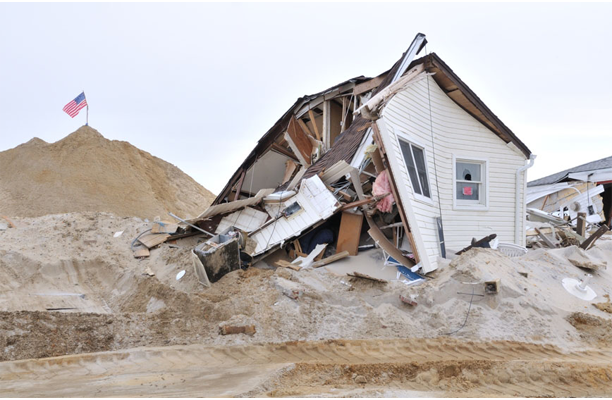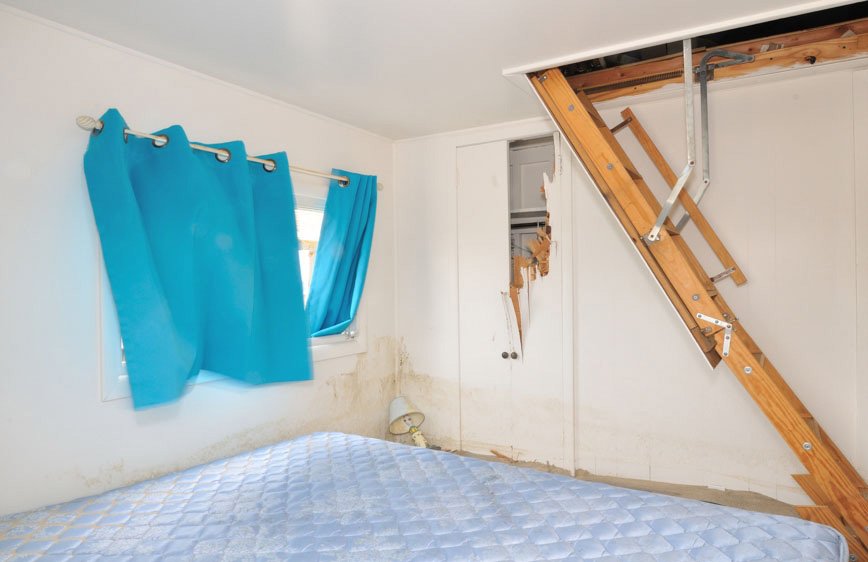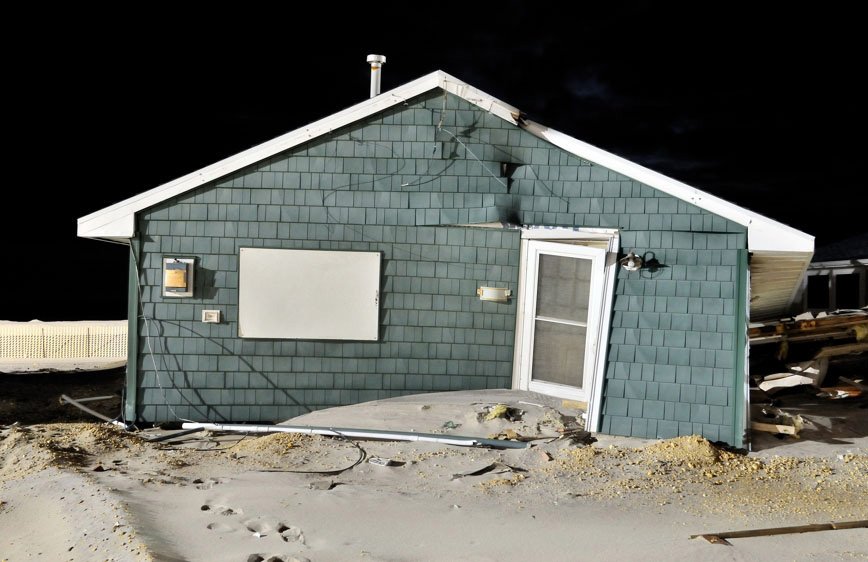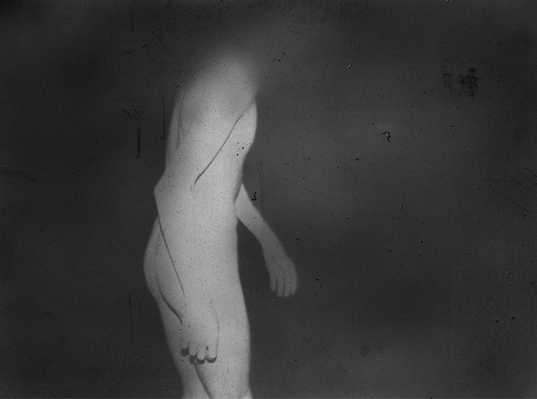USA –
Ocean Beach is a photographic project that Douglas Ljungkvist (b. 1965, Gothenburg, Sweden; currently resides in Brooklyn, NY) initiated in 2009. The original intent of Ocean Beach was to investigate a region located in the midst of a 200 mile stretch of barrier island located off the shore of New Jersey. This area is a well-known summer holiday destination for those living in America’s East Coast.
Ljungkvist’s project took an unanticipated and epic twist when in October 2012 this region was directly slammed by Hurricane Sandy. During the ensuing storm, the magic bubble surrounding this holiday retreat was burst and the fantasy totally shattered.
The book opens with an investigation of furnished rental structures that are designed and built for a holiday escape. Even the name of the Ocean Beach rental homes, called cottages, is meant to evoke thoughts of a lyrical English country side. The cottage exteriors are characterized by pastel colors; sea foam greens, peach, tans, light gray, and sky blue. The cottage interiors complement their exteriors with a similar color palette, which Ljungkvist humorously pairs together on facing pages. Few individuals are present in his photographs, with the exception of one crowd shot during what appears to be a beach party in progress.
The light and airy colors are meant to set the mood for the ensuing sunny, balmy, summer vacation days. Ocean Beach is a destination for fun times and fleeing the stuff of home—work, bills and yard work. A sugary and candy sweetness abounds. No distractions, no industrial buildings or high rise offices on this part of the Jersey Shore, just sand and surf and warm sun to bask in.

As stated by Harvey Benge in his Introduction: “These pictures address issues of conformity and of pervasive empty consumerism. We are confronted with a bizarre version of the American Dream that embodies the unrelenting desire for happiness constructed from a determined yet fragile sense of self-value and apple-pie radiant optimism.”
In October 2012 a Hurricane named Sandy devastated much of the American East Coast region when the massive storm made landfall. Ocean Beach and the length of the Jersey Shore absorbed the brunt of the savage gale winds and surging ocean. In the twinkling of an eye, the fate of nature altered this idyllic landscape, much as nature has wreaked similar havoc in many parts of the world.
In the post-Sandy photographs, his photographic perspective was altered and expanded to include the beach as well as the outlying ocean. In an interview with Ljungkvist, he stated that “it felt important as the ocean and sand was a large contribution to the destruction”.
Ljungkvist’s photographs of the Ocean Beach destruction have a calm and objective perspective without the drama of the storm. The skies are now clear blue with hints of sea haze, while the ocean is relatively flat and calm and is no longer threatening.
His documentary-style photographs are almost coolly clinical in his middle viewpoint perspective. His photographs of the damaged structures were taken well after the event transpired, and an almost ghostly quietness has come over the area. He reveals the crushed homes with sand drifts flowing through the living areas, bedrooms in shambles, wrecked furniture and kitchens all askew.
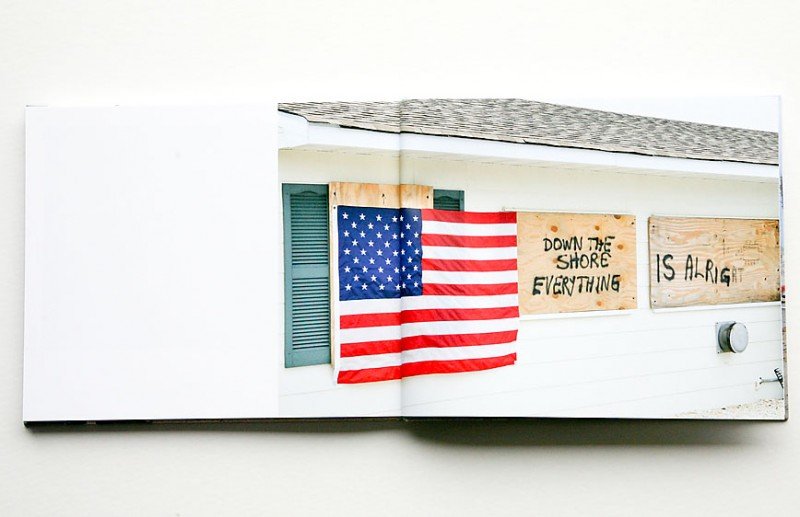
Amongst the ruin is the construction equipment attempting to take control of the damage, and new piles of dirt are mute testimony to their labor. There are profuse footprints on the layers of sand covering the interiors and other evidence that mankind is now in the midst of wrestling with the consequences of this storm. The devastation is no less, but appears more benign in the light of a clear day.
Ljungkvist’s narrative changed mid-chapter into a story about uncontrollable nature, chance, unplanned events, much as life itself. It is true serendipity as to where nature’s full impact and fury will occur. If possible, mankind can take cover or get out of its path and then deal with the aftermath the best we know how. His photographs that capture a glimpse of the construction equipment imply that the process of resurrection has begun. Similarly, the photograph of a destroyed house in the foreground, while in the background, high on a mound of fresh dirt, stands an erect and defiant American flag, signifies hope, determination and American optimism.
The hard book has an image wrap cover with superb four-color offset litho printing on semi-luster paper. The book includes essays by Harvey Benge and Steve Bission with the text in English. The pages are numbered while the photographs do not have any captions, allowing the reader to create their own stories.
Book Review by Douglas Stockdale
Photography, Published by KEHRER


